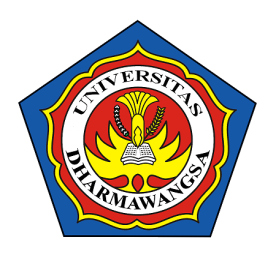Sistem Cerdas Rekomendasi Klinik Pratama di Kota Medan Berbasis Data Mining Dengan Metode K-Means Untuk Pasien BPJS dan Umum
DOI:
https://doi.org/10.70340/jirsi.v3i3.144Keywords:
Recommendation system, Klinik Pratama, Medan City, K-Means, Data Mining, BPJS, General patientsAbstract
The growth in the number of clinics in Medan City, along with the increasing population, has triggered a need for more efficient and targeted healthcare services. However, patients often face difficulties in choosing clinics that meet their medical needs, especially BPJS Kesehatan users and general patients. This is due to the lack of information regarding the facilities, service quality, and optimal clinic locations. To address this issue, an Intelligent Clinic Recommendation System is needed to provide clinic suggestions based on patient profiles and needs. This study aims to develop a clinic recommendation system in Medan City using data mining techniques with the K-Means Clustering method. The K-Means method is employed to group clinics based on several important criteria, such as location, types of services, doctor availability, and the clinic's capability to accept BPJS patients as well as general patients. Patient data analyzed includes medical history, distance from the clinic, and service preferences. The results of the study show that the K-Means-based recommendation system can effectively cluster clinics and provide relevant recommendations according to patient profiles. This system not only helps patients choose the right clinic but also improves the efficiency of patient distribution in Klinik Pratama across Medan City. With the implementation of this system, it is expected that access to healthcare services will become more equitable and the quality of services will improve, both for BPJS and general patients.
Downloads
References
W. Purba et al., “Penerapan Data Mining Untuk Pengelolaan Data Rekam Medis Menggunakan Metode K-means Clustering Pada Rumah Sakit Royal Prima Medan,” J. TEKINKOM, vol. 6, no. 1, pp. 158–168, 2023, doi: 10.37600/tekinkom.v6i1.857.
N. Kholila, M. Mujiono, and D. Wahyudi, “Pemetaan Kondisi Lingkungan Tanam menggunakan K-Means Clustering,” JSITIK J. Sist. Inf. dan Teknol. Inf. Komput., vol. 1, no. 2, pp. 137–147, 2023, doi: 10.53624/jsitik.v1i2.182.
I. G. Harsemadi, D. P. Agustino, and I. G. B. A. Budaya, “Klasterisasi Pelanggan Tenant Inkubator Bisnis STIKOM Bali Untuk Strategi Manajemen Relasi Dengan Menggunakan Fuzzy C-Means,” JTIM J. Teknol. Inf. dan Multimed., vol. 4, no. 4, pp. 232–243, 2023, doi: 10.35746/jtim.v4i4.293.
D. Marcelina, A. Kurnia, and T. Terttiaavini, “Analisis Klaster Kinerja Usaha Kecil dan Menengah Menggunakan Algoritma K-Means Clustering,” MALCOM Indones. J. Mach. Learn. Comput. Sci., vol. 3, no. 2, pp. 293–301, 2023, doi: 10.57152/malcom.v3i2.952.
B. L. Hasibuan, Sofiah, and E. Yolanda, “Pengklasifikasian Data Pasien Tes Urine Dengan Metode Clustering Pada Kantor Badan Narkotika Nasional Provinsi Sumut (BNNP SUMUT),” JUKI J. Komput. dan Inform., vol. 4, no. 2, pp. 183–193, 2022.
S. K. Dirjen et al., “Terakreditasi SINTA Peringkat 2 Sistem Rekomendasi Pemilihan Peminatan Menggunakan Density Canopy K-Means,” Masa Berlaku Mulai, vol. 1, no. 3, pp. 172–179, 2017.
J. KomtekInfo, D. Karmanita, and S. Defit, “Metode K-Means dalam Mengukur Tingkat Pemahaman Materi Mata Kuliah dan Penilaian Mahasiswa Prodi Informatika,” J. KomtekInfo, vol. 101, no. 3, pp. 132–138, 2024, [Online]. Available: https://jkomtekinfo.org/ojs.
B. Susilo, N. A. Ramdhan, and O. S. Bachri, “Application of the K-Nearest Neighbor Algorithm for Predicting Digital Product Sales Penerapan Algoritma K-Nearest Neighbor untuk Prediksi Penjualan Produk Digital,” vol. 4, no. October, pp. 1466–1476, 2024.
T. A. Pertiwi, M. Afdal, and R. Novita, “Penerapan Algoritma K-Medoids dan FP-Growth dalam Penentuan Pola Kombinasi Produk Berdasarkan Hasil Segmentasi Pelanggan,” vol. 6, no. 2, pp. 721–732, 2024, doi: 10.47065/bits.v6i2.5268.
D. Kurniadi, F. Nuraeni, and S. M. Lestari, “Implementasi Algoritma Naïve Bayes Menggunakan Feature Forward Selection dan SMOTE Untuk Memprediksi Ketepatan Masa Studi Mahasiswa Sarjana,” J. Sist. Cerdas, vol. 5, no. 2, pp. 63–82, 2022, doi: 10.37396/jsc.v5i2.215.
Downloads
Published
Issue
Section
License
Copyright (c) 2024 Dedi Leman, Elvin Syahrin

This work is licensed under a Creative Commons Attribution-ShareAlike 4.0 International License.









